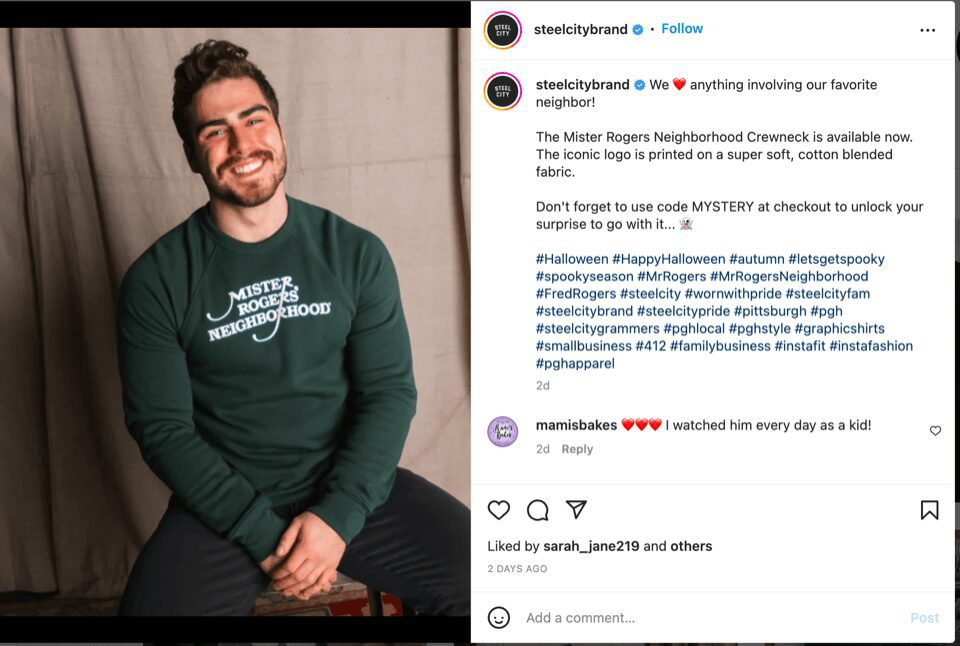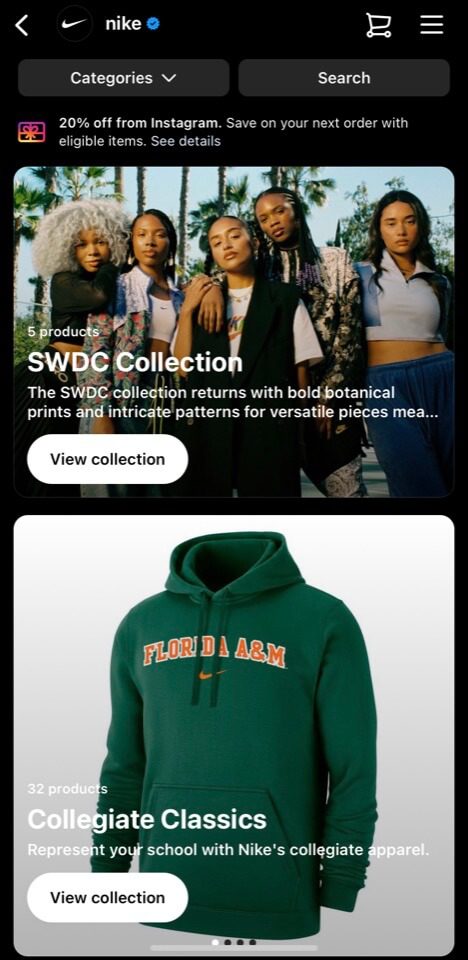It probably goes without saying, but social media is a critical component of any company’s marketing mix. Even if your company already has a vibrant social media presence, there are always new opportunities to reach your audience. Now is the perfect time to review what worked (and what didn’t) last year as you set your social media marketing strategy for 2023.
The potential is enormous. A staggering 4.5 billion people worldwide use social media. As a marketing channel, social commerce is projected to account for $1.2 trillion in revenue by 2025. But it’s easy to feel lost in these numbers. To make any sort of headway—or to see a decent return on your time investment—you need clear social media marketing goals.
Before covering how you can engage customers at each stage in the marketing funnel with your social media marketing strategy, it’s important to review what’s already working well.
Table of Contents
- 1 What Last Year Taught Us About Social Media
- 2 1. Build Brand Awareness
- 2.1 Use Google Analytics to understand your target audience
- 2.2 Tag your location and use relevant hashtags
- 2.3 Partner with other brands and influencers with whom your target audience has an affinity
- 2.4 Highlighting your current customers
- 2.5 Vary content based on the platform
- 2.6 Keep up to date on trends and what type of content performs well
- 3 2. Influence the Purchasing Decision
- 4 3. Drive Conversions
- 5 4. Build Engagement and Promote Advocacy
- 6 Don’t Be Afraid to Innovate
What Last Year Taught Us About Social Media
Analysts are still gathering data for 2022, but we can say with some level of certainty it’s only becoming more lucrative as a marketing channel. For example, 98 percent of users said they planned to make a purchase through social media in 2022. While we traditionally think of Facebook and Instagram as the primary social media marketplaces, they are no longer the only platforms drawing purchases.
Hootsuite’s annual social trends report found that a quarter of marketers consider TikTok as the most effective component of their social media marketing strategy. TikTok’s popularity among social media marketers is only expected to increase over the next five years as Gen Z’s purchasing power grows.
Social media continues to be the primary forum for companies to connect with their customers. In 2022, 75% of Twitter users, 59% of Facebook users, and 34% of Instagram users said they interacted with a brand on social media. Companies deepen relationships with their customers by making engagement a part of their social media marketing strategies.
Keeping both revenue generation and audience connection in mind, here are four big goals every business can have for social media marketing in 2023.
1. Build Brand Awareness
There’s a reason why companies invest millions in putting their names on stadiums and arenas: Potential customers need to know you exist before they’ll make a purchase.
Luckily, a coherent social media marketing strategy offers a much more affordable way of getting your name out there. In fact, 40% of consumers say they use social media to research brands and products. But simply posting to your company accounts is not enough. There are a few simple tactics you can use to engage potential customers and raise your brand’s awareness.
Use Google Analytics to understand your target audience
Google Analytics offers a wealth of demographic and behavioral data for visitors to your website. You can see breakdowns of your site’s visitors by location, interests, gender, and age group among other valuable insights. Keep in mind, you may need to enable Demographics and Interest Reports and update your site’s privacy policy if you have not already done so.

As with any data set, there is some interpretation required. It’s important to not overcompensate. For instance, if 53% of your site’s users are women, do not suddenly allocate all of your marketing resources to targeting women. On the other hand, if the majority of your traffic comes from the West Coast, that may lead you to schedule a live stream at an optimal hour in Pacific Time.
The cross-device metrics in Google Analytics 4 (GA4) are particularly informative. For example, if most of your site’s users discover landing pages on mobile but make purchases on desktop, you may reconsider the user experience in your conversion funnel and think about how you write calls to action on social media. Consulting with a GA4 expert can help you interpret the data as you set your social media marketing goals by seeing how many views and engagements it received.
By tagging the location and using hashtags reflecting your audience’s interests, your posts reach beyond your grid or timeline. If, for instance, you use the #dogsofinstagram hashtag on an Instagram post, users who are searching for the term may find your post. It’s an easy way to find new customers while keeping your current customers engaged, which are both important parts of a social media marketing strategy.

Partner with other brands and influencers with whom your target audience has an affinity
You can also use the customer insights you gathered through Google Analytics as the building blocks for partnership marketing initiatives. If your audience enjoys cooking, perhaps you could find partnership opportunities with micro-influencers on TikTok to invite them to share your product with their audience.
Highlighting your current customers
Once customers are aware of your brand, your social media marketing strategy can turn to the next goal—leaving a lasting impression. Show potential leads how customer-centric your company is by highlighting the most loyal fans on your accounts.
Here’s a great example of highlighting a customer. New users are more likely to sell on Etsy if they see the platform values the most loyal existing users.

Vary content based on the platform
If your company posts the same content across all of your platforms, your social media marketing strategy is not taking advantage of what each platform does best.
Video content, for instance, performs best on TikTok, while static images are a great fit for Instagram. Twitter, on the other hand, is best for short and punchy text-based posts. You can even share variations of the same post optimized for each social media platform.
Keep up to date on trends and what type of content performs well
Social media users are trend-savvy. By incorporating what’s trending into your marketing strategy for posts and monitoring what type of content resonates most strongly with your audience, you can shape prospective customers’ perceptions of your brand.
TikTok is especially driven by the latest trends. Here’s an example from Spread the Love Foods, a Los Angeles-based food company, using Amazon Prime Day as a way to showcase its products.

Now that the customer is aware of your brand and finds it appealing, it’s time to move them closer to a purchase. This leads us to the next big goal.
2. Influence the Purchasing Decision
This goes deeper than adding a “buy now” button. Customers usually review several brands before making a purchasing decision. In the middle of the marketing funnel, your social media marketing strategy must focus on differentiating your brand from competitors.
One of your social media marketing goals should be to establish your brand as an industry expert. As customers decide between brands, they typically opt for the one that’s capable of answering all of the questions they have. You can set yourself apart from your competitors by sharing informative content such as whitepapers, videos, and blog posts explaining various product features and the value they offer customers as a piece of your social media marketing strategy.
It could be as simple as releasing a tutorial or interactive user guide for your latest product or service. Users on social media often have curiosity before they have the inclination to make a purchase, so by linking to resources that answer all of a user’s questions, you are more likely to convert a new customer later on.
By sharing surveys with your social media followers, you can learn more about what they value and how they arrive at purchasing decisions. You can use this information to guide the messaging and positioning of your products and to create more informative content.
As part of your marketing strategy, it’s important to follow up and let your audience know that you’ve heard their voices. Phrases like “by popular demand” and “most requested new feature” can make a social media announcement more enticing and influence a new user to try your product.
3. Drive Conversions
No matter how effective your marketing team is at generating brand awareness and giving prospective customers a reason to buy, closing the sale should always be a social media marketing goal.
Remarketing social media advertisements target customers who previously viewed an item on your company website after following a link on one of your social media advertisements. Effective remarketing advertisements give potential customers even more reasons to buy your product and are a can’t-miss component of any social media marketing strategy.
Here’s an example from Pluralsight, a technology skill-building provider. It attempts to close the sale by promising the customer a free month of classes.

Make it easier for customers to make purchases
It has never been easier to shop online. Customers are now able to buy what they want without needing to exit their Facebook or Instagram accounts. For instance, Nike allows customers to purchase directly through their Instagram grid.

Offer exclusive sales and discounts to your followers
Social media accounts are the perfect channel for building urgency among customers. You already have the attention of your followers. By offering flash sales and discounts with clear start and end dates as a part of your social media marketing strategy, you give them a reason to make the purchase now.
After you convert a prospect into a customer, your next social media marketing goals focus on keeping them coming back for more.
4. Build Engagement and Promote Advocacy
The most successful marketing initiatives generate revenue without major investments. Since it’s much more expensive to acquire a new customer than it is to persuade an existing customer to make additional purchases, you want to keep your most loyal customers on board.
But repeat purchases are only half of why customer engagement is so important. Your most loyal customers are often willing to recommend your company to friends and family—and sometimes, all it takes is asking them to do it in a post.
Here are a few ideas to help your social media marketing strategy generate more repeat purchases and referrals.
From videos explaining different use cases for your product to blog posts covering new product features, you want your customers to realize the value of their purchase both immediately and over time.
Run giveaways on your accounts
Make your most loyal customers feel as though they are part of a community by running giveaways in which winners receive free products and swag from your company.
Create referral and affiliate programs
Incentivize your most loyal customers to refer your brand to their social networks. Referral programs mobilize your biggest advocates to share your brand’s story in their own words. Friends and family are the most trusted sources of information about new brands, so this strategy often has a great return on investment.
Don’t Be Afraid to Innovate
2023 is the perfect year for your company to experiment on social media, whether it’s launching a new company platform or investing in a new social media management tool. Keeping these four big goals in mind will help your business market effectively.
If you’re not sure where to start or you’d like a second opinion about a new idea, contact Coalition Technologies for a free social media marketing strategy review. Our experienced digital marketers are happy to discuss your goals and identify new opportunities for you to widen your reach on social media.


